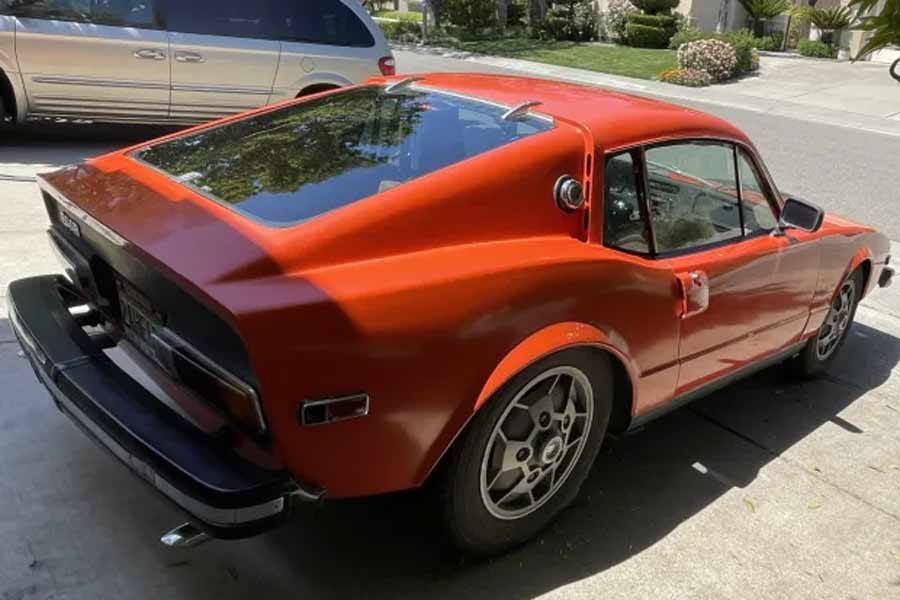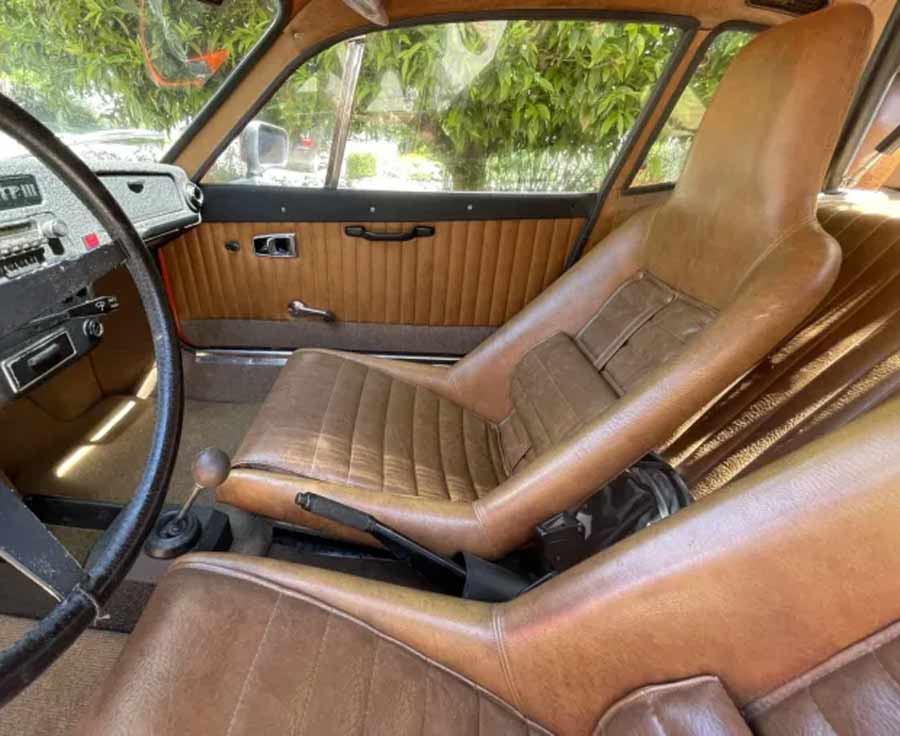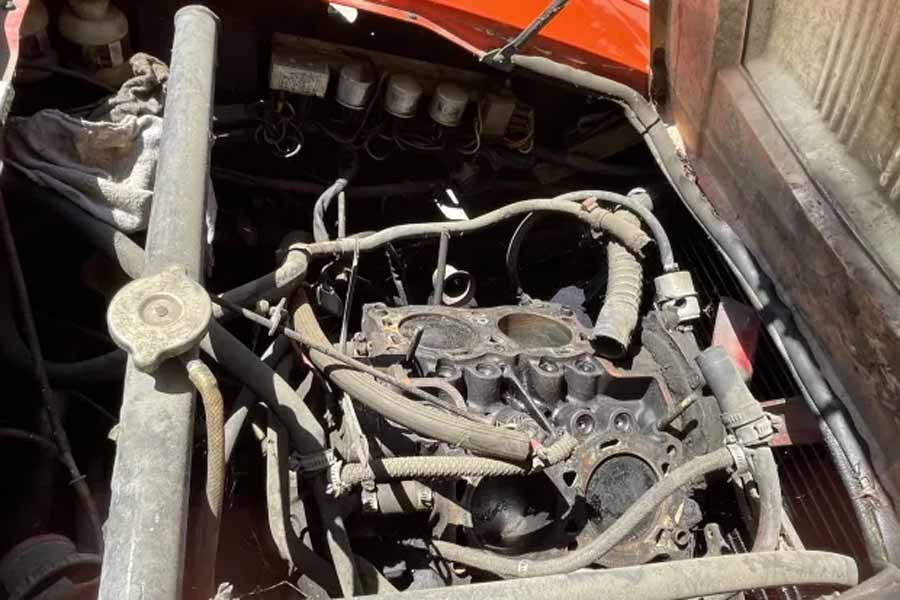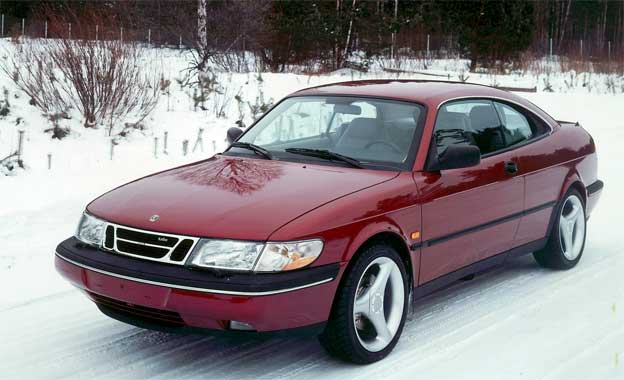The classic car arena is rife with stories of vehicles that capture the imagination and hearts of enthusiasts worldwide. Among these storied models, the 1973 Saab Sonett III stands out not just for its distinctive design and Swedish engineering but also for its vibrant presence in the classic car community.
This article explores a particular 1973 Saab Sonett III that has been a labor of love and a long-term project, shedding light on its history, technical specifications, and the indelible mark it leaves on those who have the pleasure of encountering it.
Table of Contents
Origins and Historical Significance
The Saab Sonett III first rolled out of the factory in the early 1970s, marking an era of innovation and design that was distinctly ahead of its time. Originating from Sun-West SAAB in Hollywood, California, this specific model has been a California native since its debut. The Sonett III’s fiberglass body, finished in a striking orange with a black hood insert and tail panel, not only commands attention but also tells a story of 1970s automotive trends and preferences.

The design elements like the pop-up headlights and chrome-accented rubber bumpers encapsulate the era’s aesthetic and technological ambitions. These features, combined with the unique “soccer ball” wheels, not only define the vehicle’s visual appeal but also enhance its collectibility in the eyes of classic car aficionados.
Design and Engineering
Peeking under the hood reveals the Saab Sonett III’s engineering prowess. Powered by a 1.7-liter Ford Taunus V4 engine, paired with a four-speed manual transmission, it was designed for those who appreciated the blend of performance and practicality. Although currently non-running and last started in 1997, the vehicle’s mechanical narrative is a testament to its resilience and the robust engineering practices of its time.
The interior of the Sonett III, with its tan vinyl and cloth upholstery, fixed-back bucket seats, and a wrinkle-finished dash adorned with a Sonett III badge, stands as a time capsule of 1970s automotive interior design. Instruments like the VDO gauges and a push-button Boman Astrosonix AM/FM radio speak to an era where functionality met simplicity.
Restoration and Challenges
Restoring a classic car like the 1973 Saab Sonett III is no small feat. This particular model, having not been started since 1997 and currently stored with its cylinder heads removed, presents unique challenges and opportunities for potential restorers. The task of restoration goes beyond mere mechanical repairs; it involves a deep commitment to preserving the historical integrity of the vehicle while making it road-worthy once again.
The process demands not only mechanical expertise but also a passion for bringing back to life a piece of automotive history. The availability of parts, despite the model’s rarity, thanks to organizations like the Swedish Sonett Club and experts like Mark Ashcraft, makes the restoration journey somewhat smoother for those dedicated to the cause.

Community and Legacy
The Saab Sonett III is more than just a vehicle; it’s a part of a vibrant community of enthusiasts who cherish classic Saabs for their innovation, design, and driving experience. With less than 9,000 units produced during its five-year run, the Sonett III’s rarity only adds to its allure and the tight-knit community that surrounds it.
Owners and admirers often gather at classic car shows, online forums, and enthusiast meets to share stories, exchange tips on restoration, and celebrate the enduring legacy of this unique model. The community’s dedication to maintaining and restoring these vehicles ensures that the legacy of the Saab Sonett III continues to thrive decades after the last model rolled off the production line.

A Bright Future in Burnt Orange
As the auction clock ticks down, the future of this particular 1973 Saab Sonett III hangs in balance. Whoever takes on the challenge of restoring this classic will not only acquire a vehicle but will also inherit a piece of history and a story worth telling. The journey of restoration will undoubtedly be filled with challenges, but the reward of driving a revitalized piece of automotive history is an enticing prospect for any classic car enthusiast.
In the world of classic cars, few vehicles offer a blend of design, history, and community as rich as the 1973 Saab Sonett III. As it awaits its next chapter, one thing remains clear: the legacy of this vibrant orange classic is as enduring as the community that cherishes it.











I love my 2006 Saab 9-5 2.3, everything about it, looks, drivability and performance, even the near 30 MPG. The center console could have been better laid out with the ignition switch somewhere else, gotten used to it.
I also have a nice 2008 Cadillac DTS, a Mercedes S500 (not running) and a Ford Explorer. The Saab is my race car. But must say, I knew a ladyfriend back then who had a Sonett and to be honest could never admire that car. During that time I was driving Jaguars, from a 1959 XK 150 to a 3.8 sedan and even a Daimler Majestic Major. I just never liked that Sonett but still love most other Saabs. Too bad GM interfered and stopped production.
I must admit, i manufactured these ugly bumpers in 1973.
TO SD Sandgren- Those bumpers kept the Sonett looking beautiful after a 5 mph impact – I don’t mind them. And the 99 had superior bumper protection from the beginning.
It looks like my old high school ride. The City of San Diego eventually got it when I couldn’t get it out of parking ticket jail when I was a starving student at SDSU.
Sometimes it reminds me of The Bricklin car.
TO Emerson Jay > I’ve seen one of those, in this same colour, a few times at a coffee shop near here.
To Jeff Greenway >
Where I grew up in Ottawa, this guy down the street had 3 of them. Cool car. Too bad it failed. Maybe it could’ve competed with the Delorean?
TO Emerson Jay >
It certainly seemed like a cool car. They had a lot of issues though. Apparently the doors were slow and couldn’t be opened at the same time. And they failed often. It was also apparently quite slow and handled poorly. But they looked cool!
I had one. I miss it – except for my head hitting the ceiling (I’m 6’2″) 🙂
Liked, but didnt like, was too short to reach pedals